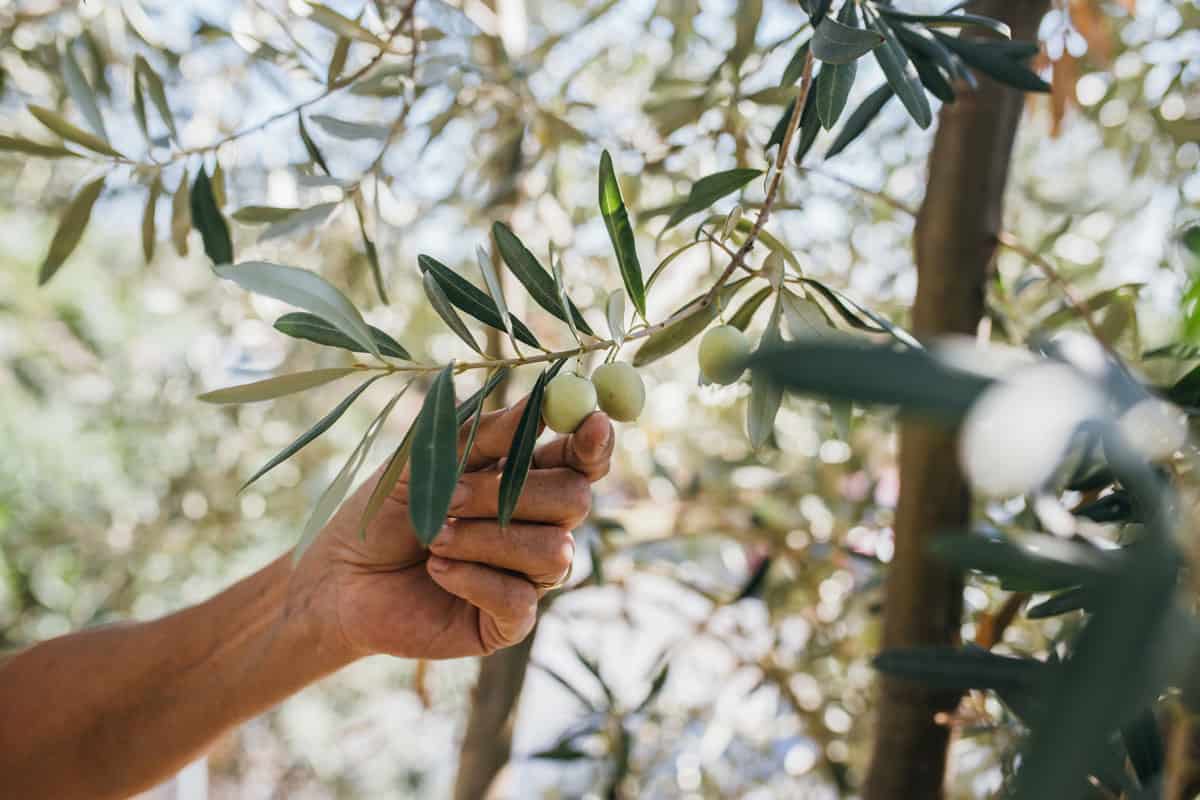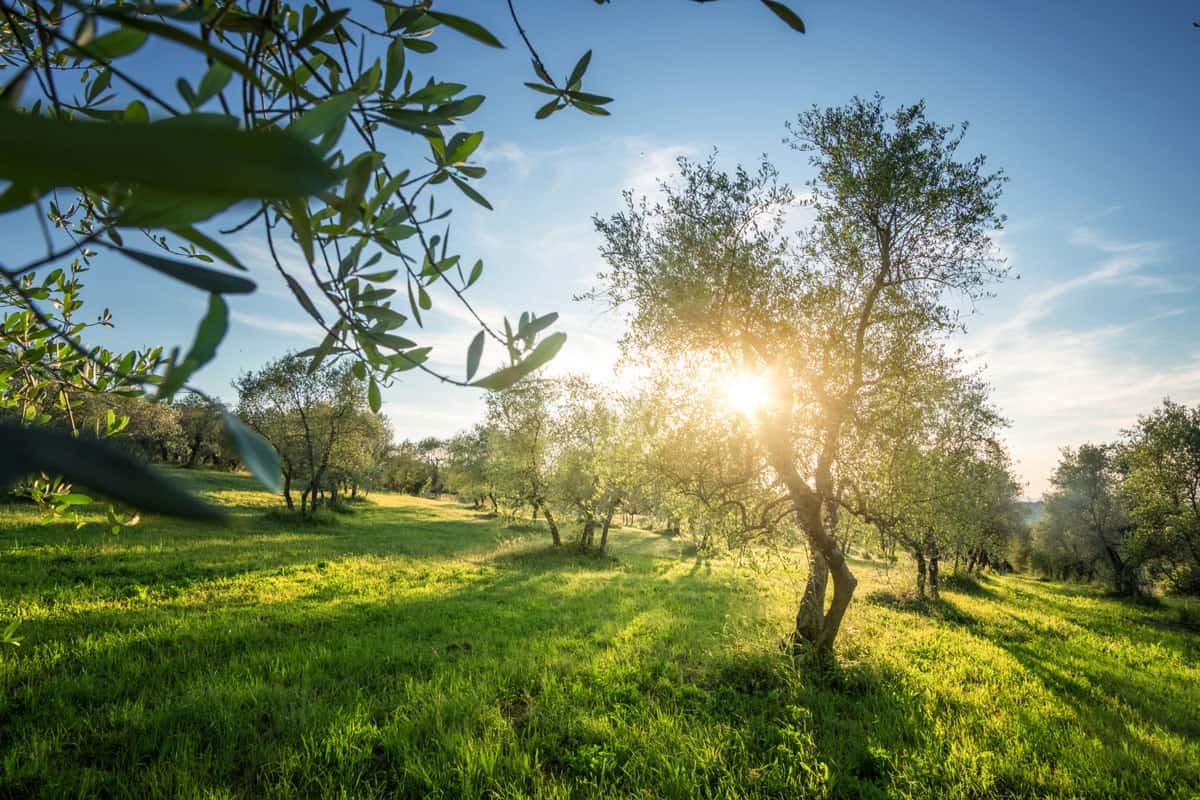Realizing one of your favorite plants isn't doing well can be devastating. Have you recently noticed the olive tree in your garden looks sickly or even like it's dying? What are the signs of a dying olive tree?
We will uncover the answers to these questions and more throughout this article. Let's discuss it below!
One of the first ways to tell if an olive tree is dead is to look at its foliage. Generally, a sick olive tree will have dry, brittle leaves. Furthermore, your tree may lose many leaves throughout its canopy if unhealthy.
You also want to examine the base of your tree to see what it feels like. If your olive tree has super brittle branches and a mushy, cracked trunk, it could be dead.
Olive trees will also have soggy roots if their death is due to overwatering, so there are many symptoms to watch out for.
As we start, we will cover all things olive trees and discuss how to get yours back to normal ASAP. Whether it's been a rough summer or you might have overwatered your olive tree, we're here to offer some guidance. With that said, let's dive right into this post!
![Olive Grove on the island of Greece plantation of olive trees, How To Tell If Olive Tree Is Dead [And How To Revive It]](https://gardentabs.com/wp-content/uploads/2022/08/How-To-Tell-If-Olive-Tree-Is-Dead-And-How-To-Revive-It.png)
What Does A Dying Olive Tree Look Like?
There are warning signs for anyone stuck on why or if their olive tree is dying. A dying olive tree will lose significant amounts of leaves, become brittle, have a mushy trunk, and even have soggy roots.
In addition, if your olive tree has a fungal disease, you could notice discoloring starting at its base.
![Over 100 years old olive tree in Spain, Mallorca, How To Tell If Olive Tree Is Dead [And How To Revive It]](https://gardentabs.com/wp-content/uploads/2022/08/How-To-Tell-If-Olive-Tree-Is-Dead-And-How-To-Revive-It-1.png)
According to Oliviada, once an olive tree develops a mushy trunk and roots, it's usually too late for you to save it. Of course, your tree won't up and die in a day, so there are signs to watch out for.
As we said, the foliage on your tree can tell you a lot about its overall health.
If the leaves on your tree are turning yellow or brown, that means you have likely overwatered. Moreover, if the leaves on an olive tree change color, this could also be due to a lack of sunlight.
Many experts claim that if an olive tree doesn't get enough sun exposure, it's likely for its foliage to yellow, wilt, and eventually fall to the ground.
So, the main culprits for a dying olive tree are a lack of sunlight and too much water.

Can You Save A Dying Olive Tree?
As long as your olive tree isn't affected by pests or diseases, you can usually revive it. However, this will significantly depend on the severity of the damage.
For example, if your tree has only recently started to change colors or become soggy towards its base, there's usually hope for it.
On the other hand, if you've been noticing issues for months, it could be too late.
This all depends on your level of routine and upkeep for your olive tree, so everyone is different. With that said, suppose your tree needs more sun.
If that's the case, try to trim back other nearby trees or remove anything obstructing your plant's view of the sun. If this is a water issue, feel the soil around your olive tree.
When an olive tree's roots become saturated for too long, it's expected to see discoloration and other abnormalities. We recommend letting your tree dry out for a week or two if this happens.
Why Has My Olive Tree Lost Its Leaves?
One of the main reasons an olive tree will lose its leaves is too much or too little water. As we covered above, this species doesn't like to sit in water, so overwatering can be a major problem.
In contrast, your olive tree also doesn't want to dry out for weeks on end. Especially if it's hot, you forgetting to water your olive tree could end up killing it.
Therefore, you want to create a routine for watering, ideally between 1-2 times per week (depending on the age of your tree and climate).
Generally, a younger olive tree likes water each week as it matures, while older trees can switch to every other. Again, this won't always be the same, especially if it's a hot, dry summer.
Another way to determine if an olive tree needs water is to check its soil. If the top two inches feel dry, your tree needs a good watering.
What Does An Overwatered Olive Tree Look Like?
As we mentioned, there are a few signs of an overwatered olive tree. First, the leaves on your tree change color: turning yellow, pale green, or brittle.
Once this starts, you will notice a higher percentage of leaves on the ground. Again, you can usually stop this from worsening by stopping watering/adding water if your tree is dry.
It's also worth mentioning that the soil around your tree can increase the chances of root rot. For example, your olive tree is likelier to become sick if you have heavily compacted clay ground.
Clay soils are infamous for killing trees. One of the ways to fix this is to break up the ground with gravel, sand, or a mixture of both.
Suppose your tree becomes too wet. You want to let it dry out for 1-2 weeks, or until the top two inches of its ground feel solid and dry.
We recommend using a soil tester to help prevent over/underwatering.
SONKIR 3-in-1 Soil Moisture/Light/pH Tester
This soil tester reads moisture, light, and pH, works outside and indoors, doesn't need batteries, and is easy to read.
Follow this link to see it on Amazon.
Should You Prune A Dying Olive Tree?

Yes! Whenever you see dead or dying sections of an olive tree, removing them is always good. Regardless of tree species, you want to get any sick foliage off your plant.
Even if your olive tree has mostly healthy sections, the sick or diseased areas can soon take over. Therefore, it's best to handle this as quickly as possible to prevent a dead tree altogether.
You should also remove any broken or leggy branches from your olive tree. The key here is keeping only the healthy, growing sections of your plant so it can give energy to those areas.
Furthermore, removing the top of your tree might be a good idea, as this can save energy for lower sections that may require it.
Can I Cut Off The Top Of My Olive Tree?
Yes, if you want to conserve your tree's energy to heal sickly lower sections, you can cut off its top. With that said, you don't want to do this to an olive tree younger than four years old.
The reasoning is that a less mature olive tree can't sustain itself after losing such a large portion.
According to the University of California, a tree's leaves are essentially its "food factory," so removing too much foliage can cause it to get even sicker.
Therefore, you want to take it easy with the pruning, only removing dead sections if your tree is younger than four years.
Again, not every olive tree dies for the same reason. There's no reason to cut off the top of an over or underwatered olive tree, but rather adjust your watering schedule accordingly.
The one time we think this would be necessary is if the top of your tree was diseased. When a tree gets sick due to fungus, that's when you should take a more dramatic approach.
How Fast Do Olive Trees Grow?

In general, olive trees will be very slow growing. Most gardeners only see about 2-4 inches of height annually, so this can be a waiting game for many.
Indoor olive trees grow even slower, often reaching 1-2 inches each year, so it's best to keep your plant outside if you want to see it grow faster.
Of course, you may notice faster growth if you fertilize an olive tree, but this can be hit or miss.
Sometimes, even with extra nutrients, an olive tree won't show much height, which explains why many people already purchase mature trees.
You also want to ensure your tree gets enough water and sunlight. Olive trees do best in the sunshine and prefer to have water every 1-2 weeks.
How Can I Make My Olive Tree Grow Faster?
One of the best ways to ensure your olive tree grows fast is to give it good-draining soil and sufficient sun exposure. Ideally, you should raise an olive tree somewhere with loamy soil.
If possible, it's also best to create an almost Mediterranean climate zone at your home. Considering these trees prefer the mountains of Europe and Asia, you want to replicate that experience to your best ability.
Many experts also recommend avoiding fertilizer for the first year your tree is in the ground. When you're ready to fertilize, you want to use a slow-release nitrogen-based formula.
TreeHelp Annual Care Kit For Olive Trees
This annual fertilizer kit works specifically for olive trees, promotes root development, is slow-release, and treats one mature tree or 2-3 smaller ones.
Follow this link to see it on Amazon.
To Wrap Up

Whether you have an olive tree or want one, it's always good to know the warning signs of a dying plant. From what we found, a sick olive tree will change colors, develop mushy bark and roots, and even start to break off in certain sections.
In addition, it's also good to feel the soil around your tree before watering, as this can prevent issues from arising. Generally, an olive tree only needs water every 1-2 weeks, so keep that in mind.
Also, you don't need to fertilize an olive tree if it's a year old or younger, but feel free to prune off any dead or dying areas!
Want more? Check out these related articles below!


